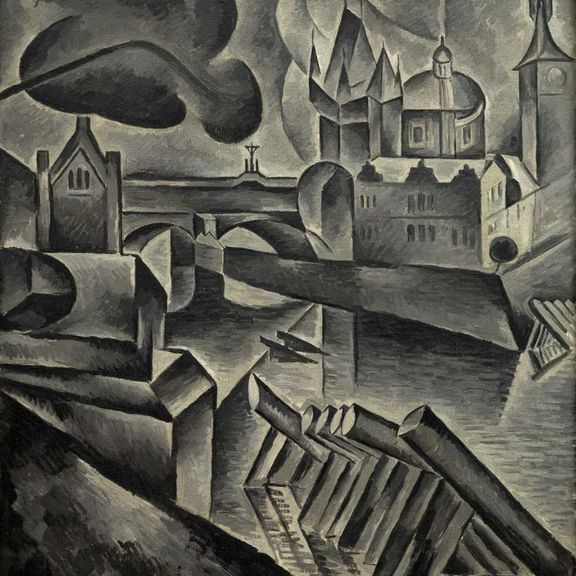
oil on canvas
1917
lower left
53 × 39 cm
framed
This high-quality, masterfully executed and visually appealing composition by the world-famous Czech Parisian and original art nouveau representative, Alfons Mucha, represents a newly discovered painting from his mature creative period when his work on the Slav Epic set was already in full swing. At that time, Mucha often devoted himself to depicting women, many of whom freely referred to Slavic mythology, which interested him until the last days of his life. The portrayed young lady, thoroughly shrouded in a richly gathered drapery with a bonnet on her head, is most likely not just a portrait but probably an allegory of some higher thought with which the artist was concerned, or at least a muse. This hypothesis is supported by other, more precisely identified allegories from this period. These include, for example, the artworks Muse (1920, KGVU Zlín, inv. No. O 1099), Slavia (1920, MT inv. No. O78) and, most notably, Destiny (1920), which undoubtedly captures the same model in addition to very similar floral ornaments. Whatever the message and meaning of this work, it has to be considered an exceptional opportunity to expand knowledge of Mucha’s mature work, as well as a highly aesthetic artwork and a unique collector’s opportunity. The painting comes from a high-quality post-revolution collection and is presented in an elegant period frame. Assessed during consultations by prof. J. Zemina and prof. R. Prahl, CSc. From the attached expertise by PhDr. K. Srp: “[...]The interconnection of red and white as one of Mucha’s popular contrasts, in which his interest in Slavic patriotism mingled with pagan and Christian symbolism, has been discussed among aestheticians from the last third of the 19th century. This girl in “white-red” represents Mucha’s period of mounting creative strength when he was already fully relieved from the captivity of his style. [...]”







